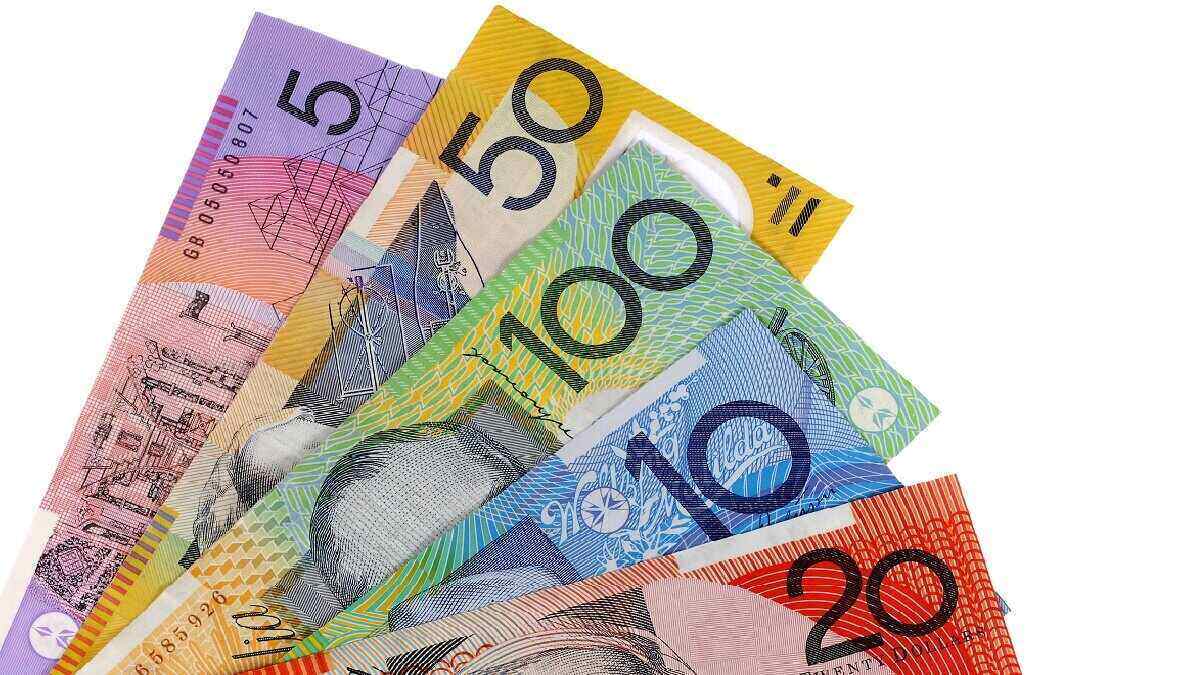Let's face it, we've all dreamt of driving around the city in a Ferrari like a recent retiree who may or may not be compensating for something. But you might change your mind on that when you learn just how heavily luxury cars are taxed in Australia.
What is the luxury car tax?
The luxury car tax (LCT for short) is a tax paid on some cars above a certain value (that includes GST). It's mostly paid by businesses that import or sell luxury cars (such as car dealerships) but can also be levied directly on individuals who import cars themselves.
The luxury car tax is 33% on the dollar amount of the car's value that's over the LCT thresholds, which, according to the Australian Taxation Office (ATO), are as follows:
|
Financial year |
Fuel-efficient vehicles |
Other vehicles |
|---|---|---|
|
2023-24 |
$89,332 |
$76,950 |
|
2022-23 |
$84,916 |
$71,849 |
|
2021-22 |
$79,659 |
$69,152 |
|
2020-21 |
$77,565 |
$68,740 |
|
2019-20 |
$75,526 |
$67,525 |
As you can see, the thresholds change every year, pegged to inflation, and are higher for vehicles deemed fuel efficient. This is designed to encourage people to buy more environmentally friendly vehicles. According to current ATO definitions, fuel-efficient cars are those with fuel consumption less than seven litres per 100 kilometres. However, this is set to change from 1 July 2025 when the definition will see consumption levels halve to 3.5 litres per 100 kilometres.
Under the 2023-24 rules, a $90,000, non-fuel-efficient car is priced $13,050 above the $76,950 threshold so it will attract the 33% LCT on the $13,050 over that amount. In practical terms, the change in the fuel efficiency threshold is expected to see more cars fall into the 'other vehicles' category.
The luxury car tax was introduced by the Howard government in 2000 alongside the Goods and Services Tax (GST) and currently raises around $1 billion a year. The changes to the fuel efficiency definition in 2025 are expected to bring in another $155 million in tax revenue, not including the annual threshold rise.
So, if businesses pay the tax, why does that matter to me?
You might be wondering why the luxury car is relevant to the average car buyer since it's the importer who pays the tax, not you, the customer. But the simple fact is that customers largely end up bearing the cost because sellers generally pass it on in the purchase price of the car.
You can be liable to pay the luxury car tax directly to the government if you import the car yourself. This process can be both time-consuming and expensive. To do this, you need to organise import approval, customs clearance, quarantine inspections, and, of course, the transportation to take delivery of the car. The federal government outlines how to go about the process. If you choose to import yourself, the luxury car tax is an extra cost you need to factor in.
How to calculate luxury car tax
If the luxury car tax is applicable to the car you're buying, then calculating the luxury car tax can be done using this formula:
(Luxury car retail value - LCT threshold) x (10 ÷ 11) x (33 ÷ 100).
The important components of this formula are:
- The car's retail value (including GST and customs duty, but excluding other Australian taxes and fees, such as stamp duty and registration)
- GST, which at the time of writing is 10%, and is represented by the (10/11) part of the equation
- The 33% tax rate, which is the (33/100) part
For example, let's look at a non-fuel-efficient car worth $90,000:
|
The retail price of the car is $90,000, so the amount on which LCT tax is levied is $13,050 ($90,000 - $76,950). Multiplying this amount by 10/11 = $11,863 33% of this amount = $3,915 Therefore, a luxury car with a retail value of $90,000 will cost the average punter $93,915 after factoring in the luxury car tax. |
|---|
Let's say we up the price to $500,000, if you're feeling fancy. At $500,000, that car would attract an extra cost of $141,915, thanks to the luxury car tax.
Calculating the tax this way is fairly simple but if you don't trust yourself with the numbers, then many websites have LCT calculators (although not the ATO's).
Victorians, Queenslanders pay extra
The tax structure applies to all imported luxury cars nationwide but there can also be an additional tax depending on what state you live in. Victoria has an extra luxury car tax of 7% for vehicles with retail prices between $100,000 and $150,000 and 9% for those more than $150,000. Queensland too has an additional luxury car tax, with sellers being charged an extra 2% in stamp duty for vehicles priced above $100,000. This is applied to the purchase price.
Are there any ways to avoid paying the luxury car tax?
As with any tax, there are always those who ask, "how can I avoid paying it?" And, yes, there are a few exceptions. The most obvious is that it doesn't apply to certain used vehicles or private sales, since the LCT will have already been paid when the car was first imported and sold.
However, there's an exception to this rule when the car is still under two years old and has actually increased in value. In this instance, a car bought from a dealer would still require LCT to be paid on the increase, but this is not common as most cars generally depreciate in value quite rapidly. Luxury car tax is also waived on new cars that still haven't been sold after two years.
If you're buying a vehicle for primary industry purposes, you may be able to claim a reduction in the tax. The same applies to registered tourism operators.
The ATO lists some other exemptions to paying LCT, including:
- A car intended to be used as an emergency vehicle (e.g. ambulance or firefighting vehicle)
- The car has been modified to be used for people with disabilities
- The car is a motorhome or campervan
- A commercial vehicle designed for carrying goods
- The recipient has quoted an ABN (although this doesn't apply in all cases)
What are the main criticisms of the luxury car tax in Australia?
The luxury car tax has long come under fire from the motor vehicle industry. One criticism is the tax covers cars that are not 'luxury' in the traditional sense. In the current market, this includes vehicles such as a Toyota Landcruiser or Nissan Patrol where entry-level models attract the tax. At the same time, some entry-level vehicles from manufacturers with recognised brand status, such as Mercedes Benz, Audi, or BMW, do not attract the tax.
As well, many critics point out the tax is irrelevant now that Australia does not have its own vehicle manufacturing industry. Chief Executive of the Federal Chamber of Automotive Industries Tony Weber said the tax continues to penalise Australian consumers and imposes unnecessary additional taxes on many low-emission technology vehicles.
The industry stepped up its calls for the tax to be scrapped altogether in the wake of changes that will lower the fuel-efficiency threshold from the 2025 financial year.
"If the Australian government wants to modernise the LCT, it should remove it as part of true tax reform for the transport sector, including consideration of a road user charge," Mr Weber said.
Australian Automotive Dealer Association CEO James Voortman agreed the recent fuel-efficiency adjustments "have made a bad tax even worse".
"So many independent reviews and inquiries have called for the LCT to be abolished," Mr Voortman said. "The Australian government should be encouraging the uptake of fuel-efficient vehicles not increasing the tax on them."
Savings.com.au's two cents
The luxury car tax is an unpopular tax within the automotive industry and over the years, has been singled out for scrapping by several independent taxation reviewers as well as many commentators. With the overwhelming majority of Australia's car fleet now imported from overseas, it can make LCT unavoidable for consumers purchasing a new luxury vehicle - and even some not considered 'luxury' in the traditional sense.
It pays to remember that when you're buying a nice new car from a dealership over a certain price, it may come with an added cost thanks to the luxury car tax. It may be worth reconsidering if it's necessary to buy the vehicle new or if you can purchase a used car instead. Only in rare cases will a used car require you to pay LCT. Of course, some luxury car purchases are based on ego or fulfilling long-held dreams and it's hard to mount a financial argument in those cases. If you happen to fall into those categories, happy motoring.
In the market for a new car? The table below features car loans with some of the lowest interest rates on the market.
Lender | |||||||||||||
|---|---|---|---|---|---|---|---|---|---|---|---|---|---|
| Variable | New | 1 year | More details | ||||||||||
| FEATURED | New Car Loan - Home Owner Special
| ||||||||||||
New Car Loan - Home Owner Special
| |||||||||||||
| Fixed | New | 99 years | More details | ||||||||||
| Loan amounts from $2k to $75k | New Car Loan
| ||||||||||||
New Car Loan
| |||||||||||||
| Fixed | New | 1 year | More details | ||||||||||
| Approval within 24 hoursEarly payout available | New Car Loan - Special (Fixed)
| ||||||||||||
New Car Loan - Special (Fixed)
| |||||||||||||
| Fixed | New | 2 years | More details | ||||||||||
New Vehicle Fast Loan Low Rate | |||||||||||||

- Available for purchasing new and demo vehicles
- $5,000 to $150,000 loan amount
- Redraw facility available up to $5000/day
- Required: Good credit history, stable employment history. Aus citizenship or PR.
Photo by Matt Lamers on Unsplash
Original article by William Jolly





 Brooke Cooper
Brooke Cooper

 Harry O'Sullivan
Harry O'Sullivan
 William Jolly
William Jolly


